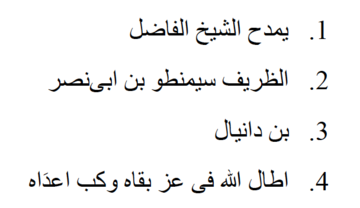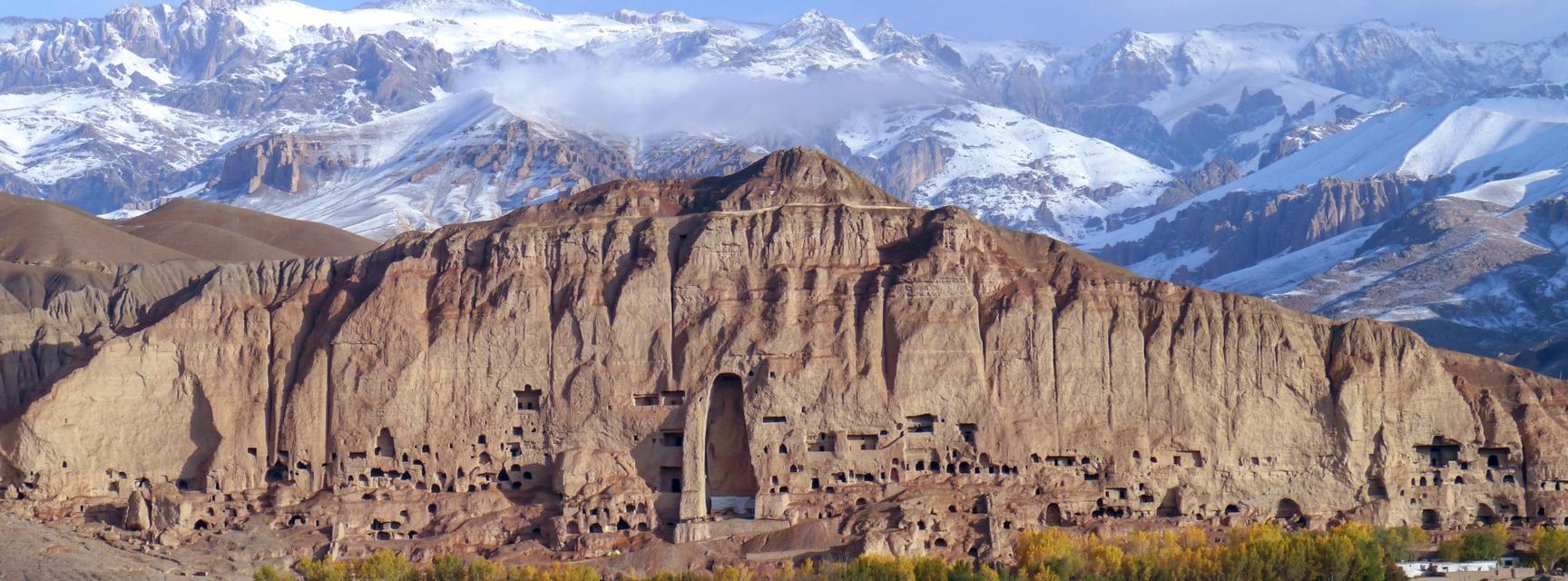Interreligious Dialogue in Medieval Bamiyan
Interreligious Dialogue in Medieval Bamiyan
by Arash Zeini, February 2023
Historical documents, as opposed to narrative and religious primary source material, are an invaluable resource for the historical study of daily life and ordinary people. Micro-historical research, thus moves away from panoptic imperial historiography and often focuses on the history of smaller states, economies and even private lives. In general, and if enough documentary material exists, the micro-histories offer a more singular but perhaps more precise view. Documentary materials abound in some cultures and languages allowing in-depth examinations of various kinds, whereas in some other regions they can be a rarity. Ginzburg (2013), for instance, drew in his classic micro-historical study of the miller Menocchio’s cosmogony on the protocols of the inquisition trials in the sixteenth century Italy (1). Ginzburg’s study provides rare insights into the beliefs and the intellectual life of ordinary people. Rose (2021), in another widely recognised examination of ordinary life, queries a vast array of documentary material to understand and approach the intellectual life of the British working classes of the early twentieth century (2). Despite the differences in academic discipline—one is a historical study while the other is sociological— both authors draw on material other than narrative, religious or royal sources (3). Unfortunately, not every discipline can rely on documentary material that sheds light on to daily life.
The Invisible East programme primarily works with New Persian documents that have come out of Afghanistan in the last decade, identified by the researchers of the programme as the Bamiyan Papers (also known as “Afghan Geniza”), Firuzkuh Papers and Khalili Documents. Most of these documents are legal or administrative in nature, giving little or no insights into the religious landscape of the time and region. However, some sheets, with content mostly in Judeo-Persian, also give valuable insight into Jewish-Muslim relations in the region at the time. Despite the thematic uniformity of the Afghan documents, we can find tiny apertures that illuminate other aspects of daily life such as interreligious relations. One such text is a panegyric poem spread across four loose leaves found among the Bamiyan Papers in Afghanistan (4). Yastrebova (2019) and Firoozbakhsh (2021) have commented on the literary properties of this early New Persian poem in qaṣīda form and its palaeography, respectively. In line with my own research interests on interreligious dialogue, I would like to shift the focus to an otherwise overlooked religious aspect of the text shining through to us from centuries long gone.
The panegyric poem is dedicated to Siman-Tov ben Abī Nasr ben Dāniyāl, whose father’s name, Abū Naṣr Yehuda ben Dāniyāl, is attested in a number of other documents from the Bāmiyān region (5). The poet, however, is currently unknown and the text does not give us an explicable clue as to their religious identity. As others have already pointed out, the purpose of this qaṣīda is to praise and remind Siman-Tov to supply now the wine that he had apparently promised some time in the past, so that the panegyrist can maintain guests at their house. The poem uses delicate and flowery language to soften the addressee as the composer of the poem admits to not having been in touch with Siman-Tov in quite some time.
As Siman-Tov is a Jewish name, and we have no reason to contest his religious affiliation, the question arises as to why the poem is written in the Arabic and not the Hebrew script that is often used in the written communications of the Jewish communities of the region and around the world (6). We can currently not answer this question with any degree of certainty, but one assumption is that the sender of the poem was not Jewish. However, it is also possible, and even more likely, that the praise was not set in verse form by the person requesting the wine but by a scribe or a ‘poet for hire’, who would compose a poem on a client’s behalf. In such a case, the panegyrist could have been Jewish or of any other religious affiliation, most likely a Muslim, while the scribe would have certainly been a Muslim as the qaṣīda in question is not composed in the Hebrew script. Writing private letters by employing the services of a letter writing scribe, or a ‘scribe for hire’, is attested for older times and is still in practice in many countries across the region (7).
Already in the beginning, at the dedication of the praise, the panegyric poem applies a soft blur to the sharp lines of religious divide as we commonly imagine them today (8):

The Jewish recipient of the poem is praised as a ‘learned Shaykh’, whose long life and victory over enemies is requested of God ( الله). The appeal to الله is not surprising here, as it is used as a general call to the deity, although, had the context been exclusively Jewish, we could have expected a different formulation of this request. Likewise, the application of الشیخ الفاضل , a title commonly reserved for Muslim elders of a community or scholars of Islam or mysticism, is hardly unexpected, but it certainly points to the interreligious context of this dialogue that must have taken place at some time in the 12th century CE (9). Titles and requests of one religious community are generously and indiscriminately applied to members of another religious community.
The most striking feature of the poem, however, is in line 14 in Firoozbakhsh’s (2021) reading of the poem:

14. ... their hopes are in your hands just as Egypt became the hope of the Canaanites
Firoozbakhsh improves Yastrebova’s (2019:132) erroneous reading کتعان to کنعان :

Although the lacuna at the start of the line makes the exact context of the verse elusive, I am certain that the petitioner of Siman-Tov seeks to liken themself to the situation of the Canaanites, who following a drought in Canaan moved to Egypt. This reference to the well-known Qurʿānic story of Jacob, who leaves Canaan for Egypt, gives this praise in request for a commodity, a particular twist, as it ultimately refers to the story of the Jewish community in times of need. The petitioner, reminding the patron of his Jewish identity and his peoples’ story, likens themself to a Jew in need of refuge. With this parallelism established, the petitioner hopes for the patron’s benevolence, just as the Canaanites once found help in Egypt. Unfortunately, we cannot be sure whether this reference was made with the religious background of Siman-Tov in mind or not. However, I find it difficult to read this line and reference in any other light. If my reading is accepted, then this poem is perhaps a witness to the fluidity of religious identity in 12th century Islamicate East, at least in some religious communities. At the same time, the panegyric is a testament to the wit and humour of the composer of the poem. To that end, I would like to suggest that the poet here not only moved the boundaries of religious identity but also proved mischievously humorous by likening the thirst of the wine-less panegyrist to the drought in Canaan.
---
Notes
(1) Ginzburg’s book was originally published in 1976.
(2) Rose published his book in 2001.
(3) For an evaluation of the position of micro-history today, see Ghobrial (2019). For context and contrast, also see Conrad (2017).
(4) Haim (2019:77) already mentions the poem, but it was first published in full by Yastrebova (2019). It is also the subject of a philological examination in a blog post by Firoozbakhsh (2021) on the website of the Invisible East programme.
(5) On this family and what we know of them from the documents, see Haim (2012, 2019) and a blog by Haim (2022) on the website of the Invisible East project. Finkelman (2019:22) gives an overview of the family and its cultural roots in the region.
(6) On the Judeo-Persian language, see Gindin 2009.
(7) The use of scribes by presumably private clients is reflected in a Middle Persian fragment edited by Zeini (2016). Scribes are still often employed for various administrative and private purposes in India, and not until long ago also in Iran.
(8) I quote here from the edition put forward by Firoozbakhsh (2021) which, as we shall see, has a decisive advantage over that of Yastrebova (2019).
(9) On the complexities of the term شیخ, see Geoffroy (2012).
---
References
Conrad, Sebastian. 2017. What is global history? Princeton: Princeton University Press.
Finkelman, Yoel. 2019. The historical and cultural significance of the ‘Afghan Genizah.’ In Life in medieval Khorasan: A Genizah from the National Library of Israel, 20–93. Saint Petersburg: The State Hermitage Publishers.
Firoozbakhsh, Pejman. 2021. A panegyric poem (in Persian). The Invisible East Blog. (12 December, 2022).
Geoffroy, Éric. 2012. Shaykh. In Encyclopaedia of Islam, 2nd edition. (13 December, 2022).
Ghobrial, John-Paul. 2019. Introduction: Seeing the world like a microhistorian. Past & Present 242 (Supplement 14). 1–22.
Gindin, Thamar. 2009. JUDEO-PERSIAN COMMUNITIES viii. JUDEO-PERSIAN LANGUAGE. In Encyclopædia Iranica, XV/2, pp. 132–139, available online.
Ginzburg, Carlo. 2013. The cheese and the worms: The cosmos of a sixteenth-century miller. Baltimore: Johns Hopkins University Press. Revised edition.
Haim, Ofir. 2012. An early Judeo-Persian letter sent from Ghazna to Bāmiyān (Ms. Heb. 4°8333.29). Bulletin of the Asia Institute 26. 103–119.
Haim, Ofir. 2019. What is the “Afghan Genizah”? A short guide to the collection of the Afghan manuscripts in the National Library of Israel, with the edition of two documents. Afghanistan. Edinburgh University Press 2(1). 70–90.
Haim, Ofir. 2022. A Jewish real-estate tycoon in Bamiyan? The Invisible East Blog. (12 December, 2022).
Rose, Jonathan. 2021. The intellectual life of the British working classes. New Haven: Yale University Press. 3rd edition.
Yastrebova, Olga. 2019. A panegyric poem dedicated to Abū al-H.asan Siman-Tov. In Life in medieval Khorasan: A Genizah from the National Library of Israel, 40–47, 132–135. Saint Petersburg: The State Hermitage Publishers.
Zeini, Arash. 2016. A unique Pahlavi papyrus from Vienna (P.Pehl. 562). Studia Iranica 45(1). 39–52. https://doi.org/10.2143/SI.45.1.3170062.
About the Author:
Arash Zeini is a Research Associate at the Faculty of Asian and Middle Eastern Studies, University of Oxford, and the Invisible East programme. This blog is an excerpt from his ongoing research on religious identity in early Islamic times.


